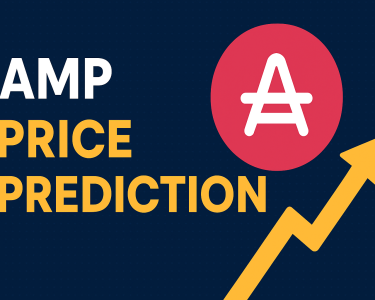In today’s fast-paced and ever-evolving business world, the ability to effectively manage finances is crucial for any organization’s success. Traditional financial planning methods are no longer enough to keep up with dynamic market trends, rapidly changing customer behavior, and increasing competition. To bridge this gap, data analytics has emerged as a game-changer for financial planning, providing businesses with the tools they need to make smarter, faster, and more accurate decisions.
In this article, we will explore how data analytics can be used to improve financial planning processes, analyze trends, make predictions, and offer strategic insights that help organizations thrive in the modern marketplace.
1. What is Data Analytics in Finance?
Data analytics refers to the process of collecting, processing, and analyzing data to extract meaningful insights and patterns. In finance, this process involves gathering financial data from various sources such as transactions, market data, customer information, and internal business metrics. Through advanced analytics techniques such as machine learning, artificial intelligence, and predictive modeling, companies can transform raw data into valuable insights.
For financial planners, data analytics means going beyond traditional spreadsheet analysis and using real-time data to forecast revenue, identify risks, improve budgeting, and optimize overall financial performance.
2. Benefits of Data Analytics for Financial Planning
2.1. Accurate Forecasting and Budgeting
Financial planning heavily relies on forecasting future revenues, expenses, and market conditions. With businesses can use historical data and predictive models to make more accurate financial forecasts. This helps create more realistic budgets, reduce costs, and allocate resources effectively.
2.2. Identifying Financial Risks
Data analytics allows businesses to identify potential risks by analyzing trends, monitoring market changes, and detecting anomalies. This ability to foresee risks can help businesses avoid financial pitfalls and create strategies that protect them against uncertainty.
2.3. Optimizing Financial Operations
Organizations can use data analytics to streamline financial operations, ensuring that resources are used efficiently. By analyzing spending patterns, companies can identify unnecessary expenses and eliminate waste. Data-driven decisions also help improve cash flow management, enabling businesses to better meet their financial goals.
2.4. Enhancing Decision Making
Access to real-time data and analytics tools empowers financial planners to make better decisions faster. Whether it’s making investment choices, revising budgets, or setting financial strategies, data analytics provides evidence-based insights to support confident decision-making.
2.5. Improving Financial Performance
Businesses can enhance their overall financial performance through by identifying growth opportunities, tracking key performance indicators (KPIs), and continuously monitoring the financial health of the organization. This leads to increased profitability, sustainability, and competitiveness in the market.
3. Key Data Analytics Tools for Financial Planning
3.1. Business Intelligence (BI) Tools
BI tools such as Tableau, Power BI, and Qlik allow organizations to visualize financial data in real time. These tools offer interactive dashboards, making it easy to monitor financial performance and assess trends across different departments.
3.2. Predictive Analytics Platforms
Platforms like IBM Watson, SAS, and Google Analytics provide businesses with predictive models that help forecast future financial outcomes. These platforms leverage machine learning and artificial intelligence to analyze historical data and predict trends such as cash flow, sales growth, and investment returns.
3.3. Financial Modeling Software
Financial modeling tools such as Quantrix and Anaplan enable businesses to create comprehensive financial models. These models can be used for budgeting, scenario analysis, and financial forecasting, ensuring that organizations are prepared for any financial situation.
3.4. Data Management Tools
Tools such as SQL, Hadoop, and Apache Spark allow companies to collect and manage large volumes of financial data from various sources. Data management tools ensure that financial data is stored securely and can be accessed quickly for analysis.
4. How Data Analytics Improves Financial Decision Making
Data analytics plays a crucial role in improving decision-making by providing businesses with the data-driven insights they need. Here’s how:
4.1. Data-Driven Insights
Data analytics allows businesses to move away from gut-feeling decisions and instead base their choices on factual, real-time data. This results in decisions that are more aligned with market realities, reducing risks and increasing the chances of success.
4.2. Scenario Planning
Data analytics helps financial planners create multiple financial scenarios based on different variables. Businesses can analyze the impact of various factors such as economic downturns, customer demand changes, or market fluctuations on their financial performance. This helps companies be prepared for a range of outcomes.
4.3. Cost Efficiency
Data analytics enables companies to understand cost drivers and identify areas where they can save money. Financial planners can use insights derived from analytics to optimize their budget allocation, reduce wasteful spending, and improve cost efficiency.
4.4. Strategic Planning
By analyzing data, financial teams can identify key business opportunities, such as areas where revenue growth is possible or where market trends are shifting. These insights allow businesses to craft strategies that align with their long-term financial goals.
5. Challenges of Implementing Data Analytics in Financial Planning
While data analytics offers numerous benefits, it also comes with its challenges:
5.1. Data Privacy and Security
With the increasing use of data in financial planning, concerns over data privacy and security are more critical than ever. Companies need to ensure that sensitive financial data is protected from breaches and unauthorized access.
5.2. Data Quality
The effectiveness of data analytics depends on the quality of the data being analyzed. Inaccurate, incomplete, or outdated data can lead to incorrect conclusions and poor decision-making.
5.3. Integration with Existing Systems
For many organizations, integrating tools with existing financial planning systems can be complex. Companies need to invest in the right infrastructure and training to ensure that their analytics platforms work seamlessly with their current financial tools.
5.4. High Costs
Implementing advanced data analytics platforms can be expensive, particularly for small and medium-sized businesses. The cost of software, hardware, and skilled personnel can be a significant barrier to adoption.
6. Best Practices for Leveraging Data Analytics in Financial Planning
6.1. Invest in the Right Tools
Choose the right data analytics tools that align with your business needs. Ensure that these tools can handle large volumes of data and offer the ability to generate real-time insights.
6.2. Focus on Data Quality
Data accuracy is essential for effective financial planning. Implement rigorous data collection and validation processes to ensure that the data being analyzed is of high quality.
6.3. Continuous Monitoring
Financial planning is not a one-time process. Use to continuously monitor financial performance and adjust your strategies accordingly. Real-time data allows businesses to stay agile and respond to changing market conditions.
6.4. Train Your Team
Ensure that your financial planners and analysts are well-trained in using data analytics tools. Providing the right training and resources can help them fully leverage the power of data analytics in their decision-making processes.
Analysis Table: Key Benefits of Data Analytics in Financial Planning
| Benefit | Description |
|---|---|
| Accurate Forecasting | Enables businesses to predict financial outcomes using historical data and predictive models. |
| Identifying Risks | Helps in detecting potential financial risks and market changes early on. |
| Optimizing Operations | Streamlines financial processes by analyzing spending patterns and improving resource allocation. |
| Enhancing Decision-Making | Supports faster and better financial decisions with real-time, data-driven insights. |
| Improving Financial Performance | Tracks key performance indicators (KPIs) and identifies growth opportunities for improved profitability. |
Comparative Table: Traditional Financial Planning vs. Data-Driven Financial Planning
| Aspect | Traditional Financial Planning | Data-Driven Financial Planning |
|---|---|---|
| Forecasting Accuracy | Relies on historical data and basic assumptions | Uses predictive models and real-time data for accurate forecasts |
| Decision-Making | Based on intuition and past experiences | Data-driven, leveraging real-time insights |
| Risk Management | Limited risk identification, reactive | Proactive, identifies risks early through data analysis |
| Operational Efficiency | Slower, manual processes | Automated and optimized through data tools |
| Cost of Implementation | Lower initial costs, but less efficient over time | Higher initial costs, but long-term savings through efficiency |
Conclusion: The Future of Financial Planning is Data-Driven
Incorporating data analytics into financial planning is no longer a luxury—it’s a necessity for businesses that want to thrive in today’s competitive landscape. From accurate forecasting to risk management and optimizing operations offers numerous benefits that can help companies make better financial decisions.
However, successful implementation requires choosing the right tools, ensuring data quality, and continuously training your financial team. By doing so, businesses can unlock the full potential of data analytics and create financial strategies that lead to sustainable growth.





